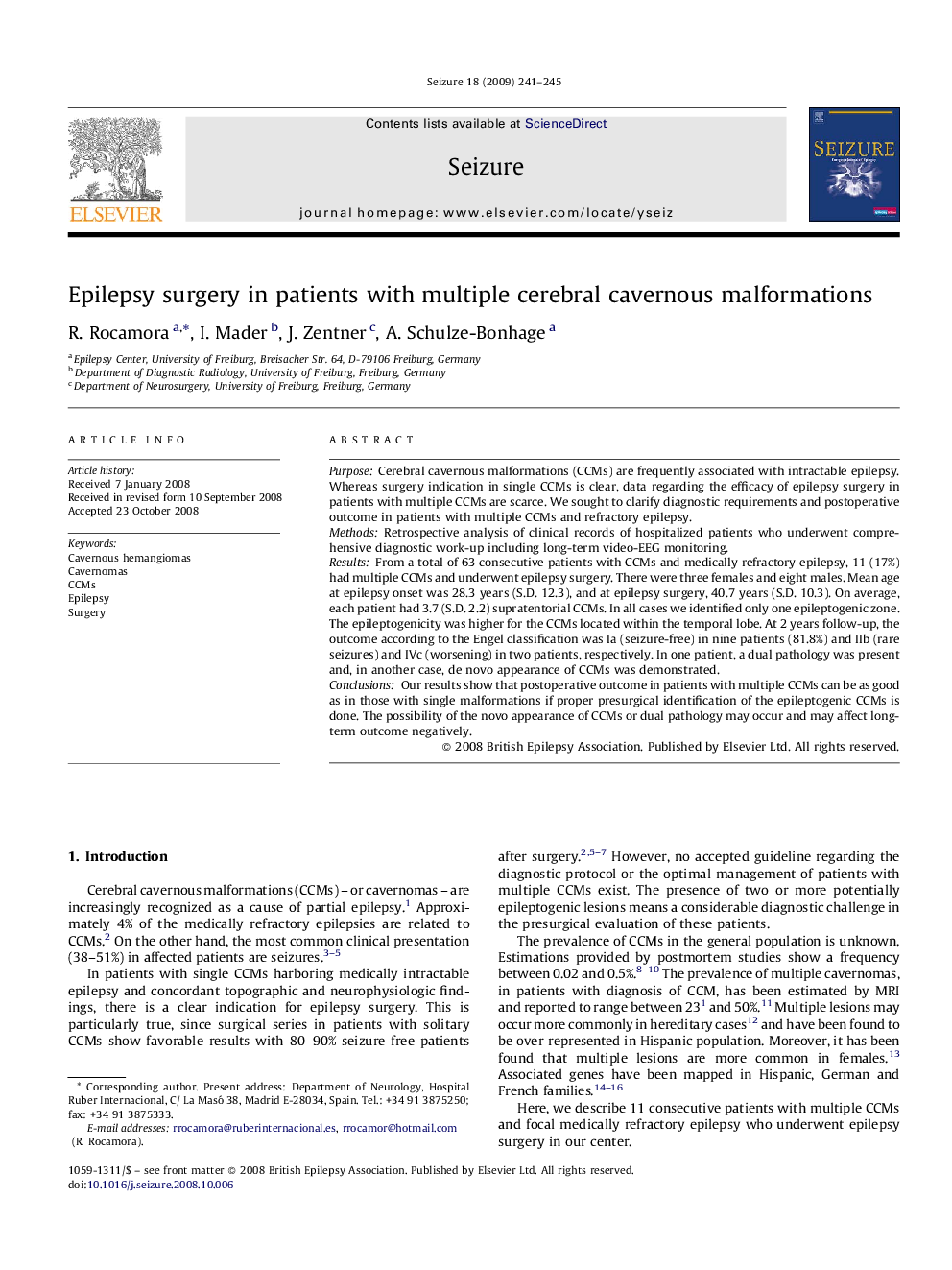| Article ID | Journal | Published Year | Pages | File Type |
|---|---|---|---|---|
| 341108 | Seizure | 2009 | 5 Pages |
PurposeCerebral cavernous malformations (CCMs) are frequently associated with intractable epilepsy. Whereas surgery indication in single CCMs is clear, data regarding the efficacy of epilepsy surgery in patients with multiple CCMs are scarce. We sought to clarify diagnostic requirements and postoperative outcome in patients with multiple CCMs and refractory epilepsy.MethodsRetrospective analysis of clinical records of hospitalized patients who underwent comprehensive diagnostic work-up including long-term video-EEG monitoring.ResultsFrom a total of 63 consecutive patients with CCMs and medically refractory epilepsy, 11 (17%) had multiple CCMs and underwent epilepsy surgery. There were three females and eight males. Mean age at epilepsy onset was 28.3 years (S.D. 12.3), and at epilepsy surgery, 40.7 years (S.D. 10.3). On average, each patient had 3.7 (S.D. 2.2) supratentorial CCMs. In all cases we identified only one epileptogenic zone. The epileptogenicity was higher for the CCMs located within the temporal lobe. At 2 years follow-up, the outcome according to the Engel classification was Ia (seizure-free) in nine patients (81.8%) and IIb (rare seizures) and IVc (worsening) in two patients, respectively. In one patient, a dual pathology was present and, in another case, de novo appearance of CCMs was demonstrated.ConclusionsOur results show that postoperative outcome in patients with multiple CCMs can be as good as in those with single malformations if proper presurgical identification of the epileptogenic CCMs is done. The possibility of the novo appearance of CCMs or dual pathology may occur and may affect long-term outcome negatively.
